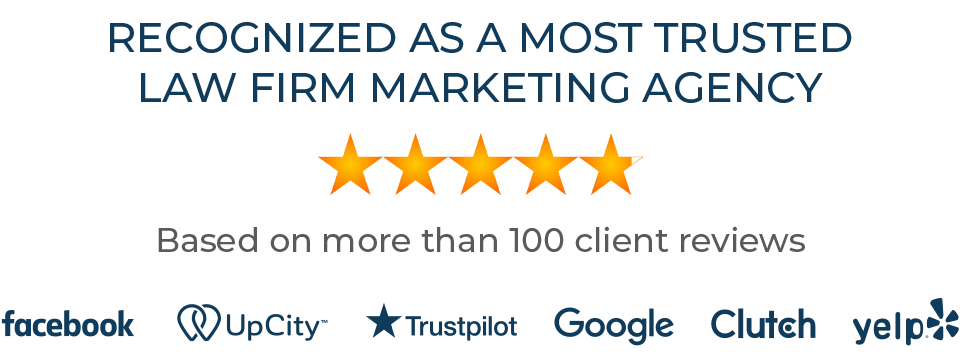The next update to Google’s algorithm is only weeks away. Gary Illyes, A trend analyst and Google says that at the latest, the next update would come at the end of this quarter, which means that if it isn’t rolled out in the next couple of weeks, it definitely will be by the end of March. Penguin is changing and while we have not gotten and probably will not get a firm date for this update, this is probably the best we are going to get. It’s now been more than a year since Google made changes to Penguin, which is specifically designed to prevent link spam, and in reality, the last update was more like a refresher, affecting very few results.
 What’s the difference? When the algorithm is given a refresh, the search engine lowers the rank of sites that are giving off signals that label them as spam, usually specifically targeting those that have popped up since the last update.
What’s the difference? When the algorithm is given a refresh, the search engine lowers the rank of sites that are giving off signals that label them as spam, usually specifically targeting those that have popped up since the last update.
Penguin is Google’s best technology for fighting spam, but little is known about exactly what is going to happen during this update. Google has released very few details about the nature of the update, and if previous updates are an indication of how this update will go as well, there probably will not be any information about what was changed or added until after the update has already been rolled out. That doesn’t mean that there isn’t anything you can do to protect your website from this update, however. Here are a few of the best ways:
Know What Penguin Cares About
In short, Penguin cares about low-quality backlinks, links that have anchor text that is over-optimized, advertisements in text form, and linking tricks like exchanges or link spam. In just about every update, we can expect penalties for these behaviors and behaviors like these to become harsher and more significant. Penalties might be applied for your entire website or just for a specific page, but either way, incurring one will be annoying and could ruin your entire page rank.
Review Your Link Profile to See if You Are at Risk
 The first thing to do is to look at your traffic and performance after previous updates, if your website has been around that long. If you weathered those updates without a scratch, it is unlikely that you’ll see a penalty this time around. If you did lose page rank or earn a penalty during one of those updates, you might see even harsher penalties this time around. A bad link profile is always going to be bad for search engine optimization, so if you’ve had one before and you did not take steps to repair it, then you will still have a problem with the most current update, even if you have since recovered your ranking.
The first thing to do is to look at your traffic and performance after previous updates, if your website has been around that long. If you weathered those updates without a scratch, it is unlikely that you’ll see a penalty this time around. If you did lose page rank or earn a penalty during one of those updates, you might see even harsher penalties this time around. A bad link profile is always going to be bad for search engine optimization, so if you’ve had one before and you did not take steps to repair it, then you will still have a problem with the most current update, even if you have since recovered your ranking.
It can be tricky to ascertain whether or not any devaluing of your website was actually due to a bad link profile or whether it can be attributed to other factors. Look specifically at the dates that previous Penguin updates were rolled out and how your website faired after those updates. Sometimes rank loss that is actually due to bad coding or bad content is believed to be the fault of Penguin. If you have bad links, however, and you lose your ranking or incur a penalty, you can be fairly confident about blaming that rank loss of Penguin, or, more specifically, on those bad links.
Eliminate Bad Links and Build Better Ones
If you look at your link profile and you determine that you are actually in danger of being docked when this update arrives, there are a few things you can do to try to fix your links before Penguin updates. The first is to remove any and all spam or spam-like links in your profile. You might not even realize you are doing it, but if you have bought links, swapped links with a bunch of different websites, use the same anchor text every single time you post a link, or posted a link on a low-authority website, these are the ones you want to remove or change.
Your second course of action, after changing or removing those bad links, will be to start building a better profile. You might still see a dip in rankings, simply because you have a weak link portfolio, but you are much less likely to see long-term issues if you eliminate the fat and start building healthy links that you won’t have to worry about during the next update.
The next update to Google’s algorithm is only weeks away. Gary Illyes, A trend analyst and Google says that at the latest, the next update would come at the end of this quarter, which means that if it isn’t rolled out in the next couple of weeks, it definitely will be by the end of March. Penguin is changing and while we have not gotten and probably will not get a firm date for this update, this is probably the best we are going to get. It’s now been more than a year since Google made changes to Penguin, which is specifically designed to prevent link spam, and in reality, the last update was more like a refresher, affecting very few results.
 What’s the difference? When the algorithm is given a refresh, the search engine lowers the rank of sites that are giving off signals that label them as spam, usually specifically targeting those that have popped up since the last update.
What’s the difference? When the algorithm is given a refresh, the search engine lowers the rank of sites that are giving off signals that label them as spam, usually specifically targeting those that have popped up since the last update.
Penguin is Google’s best technology for fighting spam, but little is known about exactly what is going to happen during this update. Google has released very few details about the nature of the update, and if previous updates are an indication of how this update will go as well, there probably will not be any information about what was changed or added until after the update has already been rolled out. That doesn’t mean that there isn’t anything you can do to protect your website from this update, however. Here are a few of the best ways:
Know What Penguin Cares About
In short, Penguin cares about low-quality backlinks, links that have anchor text that is over-optimized, advertisements in text form, and linking tricks like exchanges or link spam. In just about every update, we can expect penalties for these behaviors and behaviors like these to become harsher and more significant. Penalties might be applied for your entire website or just for a specific page, but either way, incurring one will be annoying and could ruin your entire page rank.
Review Your Link Profile to See if You Are at Risk
 The first thing to do is to look at your traffic and performance after previous updates, if your website has been around that long. If you weathered those updates without a scratch, it is unlikely that you’ll see a penalty this time around. If you did lose page rank or earn a penalty during one of those updates, you might see even harsher penalties this time around. A bad link profile is always going to be bad for search engine optimization, so if you’ve had one before and you did not take steps to repair it, then you will still have a problem with the most current update, even if you have since recovered your ranking.
The first thing to do is to look at your traffic and performance after previous updates, if your website has been around that long. If you weathered those updates without a scratch, it is unlikely that you’ll see a penalty this time around. If you did lose page rank or earn a penalty during one of those updates, you might see even harsher penalties this time around. A bad link profile is always going to be bad for search engine optimization, so if you’ve had one before and you did not take steps to repair it, then you will still have a problem with the most current update, even if you have since recovered your ranking.
It can be tricky to ascertain whether or not any devaluing of your website was actually due to a bad link profile or whether it can be attributed to other factors. Look specifically at the dates that previous Penguin updates were rolled out and how your website faired after those updates. Sometimes rank loss that is actually due to bad coding or bad content is believed to be the fault of Penguin. If you have bad links, however, and you lose your ranking or incur a penalty, you can be fairly confident about blaming that rank loss of Penguin, or, more specifically, on those bad links.
Eliminate Bad Links and Build Better Ones
If you look at your link profile and you determine that you are actually in danger of being docked when this update arrives, there are a few things you can do to try to fix your links before Penguin updates. The first is to remove any and all spam or spam-like links in your profile. You might not even realize you are doing it, but if you have bought links, swapped links with a bunch of different websites, use the same anchor text every single time you post a link, or posted a link on a low-authority website, these are the ones you want to remove or change.
Your second course of action, after changing or removing those bad links, will be to start building a better profile. You might still see a dip in rankings, simply because you have a weak link portfolio, but you are much less likely to see long-term issues if you eliminate the fat and start building healthy links that you won’t have to worry about during the next update.
Published on February 25, 2016

